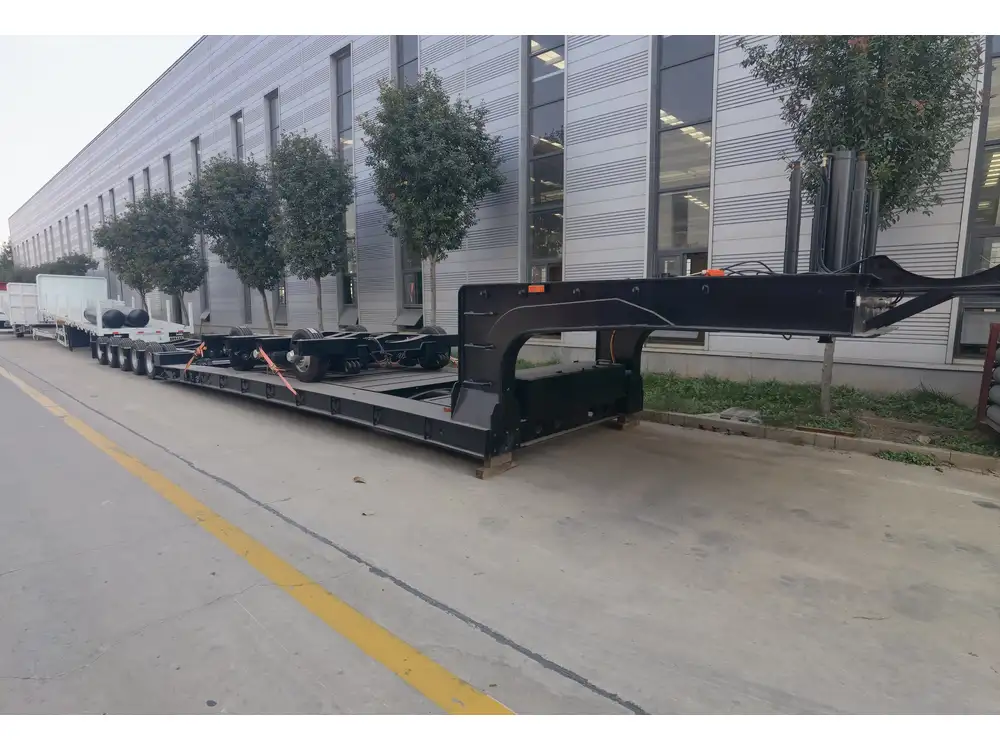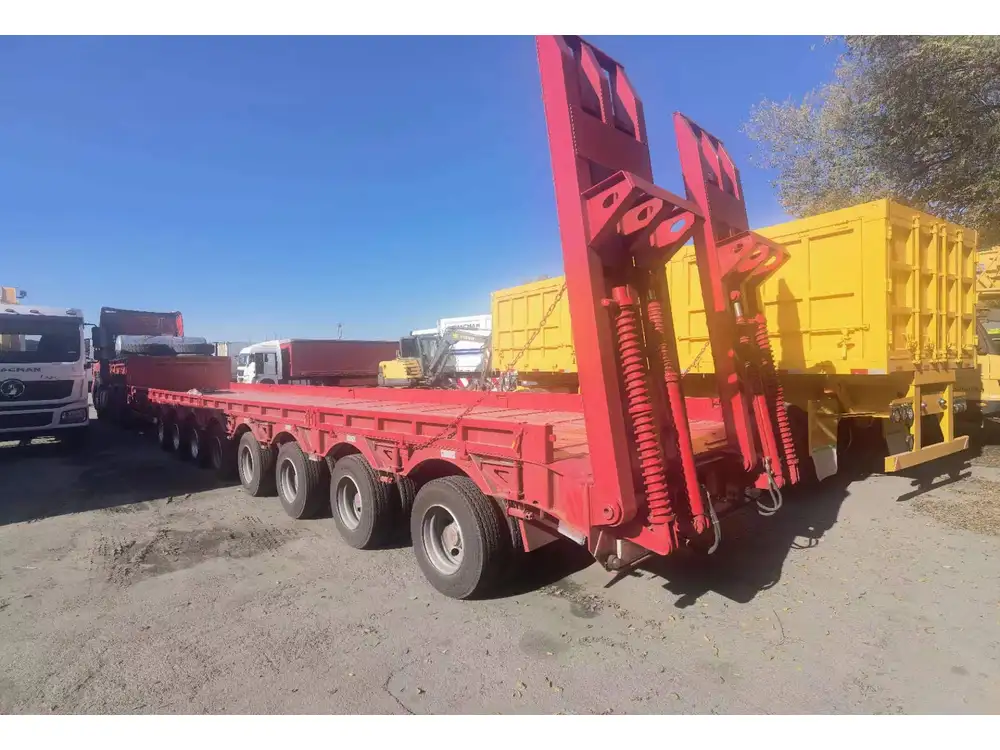When it comes to long-haul transportation, understanding the methods by which semi trucks connect to trailers is crucial for both efficiency and safety on the roads. This article delves deeply into the intricacies of the coupling process, the components involved, and the various types of connections that exist.
Understanding the Basics of Semi-Truck and Trailer Connection
At its core, the connection between a semi truck and a trailer is a specialized coupling design known as a fifth wheel hitch. This mechanism allows for a secure attachment while providing the flexibility needed for maneuverability. Here’s how these elements work:
Components of the Connection
Fifth Wheel Hitch
- Functionality: The fifth wheel hitch is mounted on the tractor (the semi truck) and forms a pivot point that connects to the trailer.
- Design: It typically consists of a plate with a locking jaw that secures the kingpin of the trailer.
Kingpin
- Location: The kingpin is a vertical pin located on the underside of the trailer’s front.
- Interaction: It fits into the fifth wheel, enabling a stable connection.
Safety Chain
- Purpose: Safety chains provide additional security, ensuring the trailer remains attached even if the primary connection fails.
- Placement: These chains are attached to both the truck and the trailer.
Airlines and Electrical Connections
- Function: These connections allow for the operation of trailer brakes and lights.
- Types: Typically, there are two air hoses—one for the service brakes and another for the emergency brakes.

The Coupling Process
Connecting a semi truck to a trailer involves several well-defined steps to ensure safety and stability. Below is a structured breakdown of the coupling process:
| Step No. | Action | Details |
|---|---|---|
| 1 | Align the Truck with the Trailer | Position the truck parallel to the trailer, ensuring both are on a level surface. |
| 2 | Lower the Trailer’s Landing Gear | This stabilizes the trailer while it’s detached and allows for easier coupling. |
| 3 | Reverse the Truck Towards the Trailer | When the truck is positioned correctly, slowly reverse the truck towards the trailer until the kingpin aligns with the hitch plate. |
| 4 | Engage the Fifth Wheel Hitch | The kingpin should slide into the hitch (the mechanism should latch automatically). You will hear a click indicating a successful lock. |
| 5 | Check the Lock | Pull forward slightly to ensure the kingpin is secured and locked in place within the hitch. |
| 6 | Connect Air and Electrical Lines | Attach the air hoses and electrical connectors to ensure proper operational capabilities. |
| 7 | Perform Visual Inspections | Double-check that all components are secure, including safety chains, before hit the road. |
Types of Trailers Commonly Used with Semi Trucks
Understanding the various types of trailers can provide insight into how trucks adapt their connection systems based on cargo needs. Here are several common types:
| Trailer Type | Description | Typical Uses |
|---|---|---|
| Flatbed Trailer | Open design, no sides or roof, allowing for easy loading/unloading. | Construction materials, oversized cargo. |
| Reefer Trailer | Insulated trailer with refrigeration units. | Perishable goods, food items. |
| Dry Van Trailer | Fully enclosed trailer providing protection from the elements. | General freight, consumer goods. |
| Tank Trailer | Designed to transport liquids, featuring specialized fittings. | Chemicals, fuels, food grade liquids. |
| Car Hauler Trailer | Equipped for transporting vehicles, often includes ramps. | Auto transport, dealerships. |
Safety Considerations for Connecting Trailers
Safety is paramount when operating a semi truck and trailer combination. Here are some essential safety considerations to keep in mind:

1. Inspect Before You Connect
- Conduct a thorough pre-trip inspection to ensure that both the truck and trailer components are in optimal condition, checking for wear or damage.
2. Ensure Proper Alignment
- Misalignment can lead to the kingpin not engaging properly, increasing the risk of an accident.
3. Utilize Proper Techniques
- Follow the above step-by-step process diligently. Rushing through any of the steps can lead to potentially catastrophic failures.

4. Engage Safety Mechanisms
- Always remember to attach safety chains and inspect air and electrical connections before departure.
5. Monitor Weight Distribution
- Check that the trailer is loaded correctly to prevent sway or fishtailing while on the road.
Common User Queries and Expert Insights
As users search for information pertaining to semi truck and trailer connections, they may possess a variety of questions that extend beyond basic mechanics. Here’s a selection of common inquiries with informed responses:

What Causes the Connection to Fail?
- Worn-out Components: Over time, parts of the hitch, kingpin, or safety chains may wear out, compromising connection integrity.
- Improper Alignment: A misalignment while backing up can lead to incomplete engagement, resulting in hazardous conditions.
- Equipment Overloading: Exceeding weight limitations can strain connections, leading to failure.
How Can You Maintain the Connection System?
- Regular inspections and maintenance are essential. Lubricate the fifth wheel hitch components routinely to ensure smooth operation and longevity.
What Should You Do If the Trailer Becomes Detached While Driving?
- Remain calm and steady, avoiding sudden movements. If safe to do so, gradually slow down and pull over to assess the situation.

Conclusion and Final Thoughts
Understanding how semi trucks connect to trailers is essential knowledge for those in the transportation industry. From the coupling process to safety precautions, each step is fundamental in ensuring that goods are transported efficiently and safely across the vast expanse of roads we navigate daily. Armed with this knowledge, operators can enhance their operational practices, mitigate risks, and foster a smoother transportation experience.
Whether you are a seasoned professional or new to the industry, mastering the intricacies of semi truck and trailer connections will serve you well. By adhering to best practices, maintaining your equipment, and prioritizing safety, you can ensure that your haul is both secure and compliant with the regulations that govern our highways.



